
Understanding the Future of Electricity: Innovations, Safety, and Sustainable Practices – By ShalaSaral
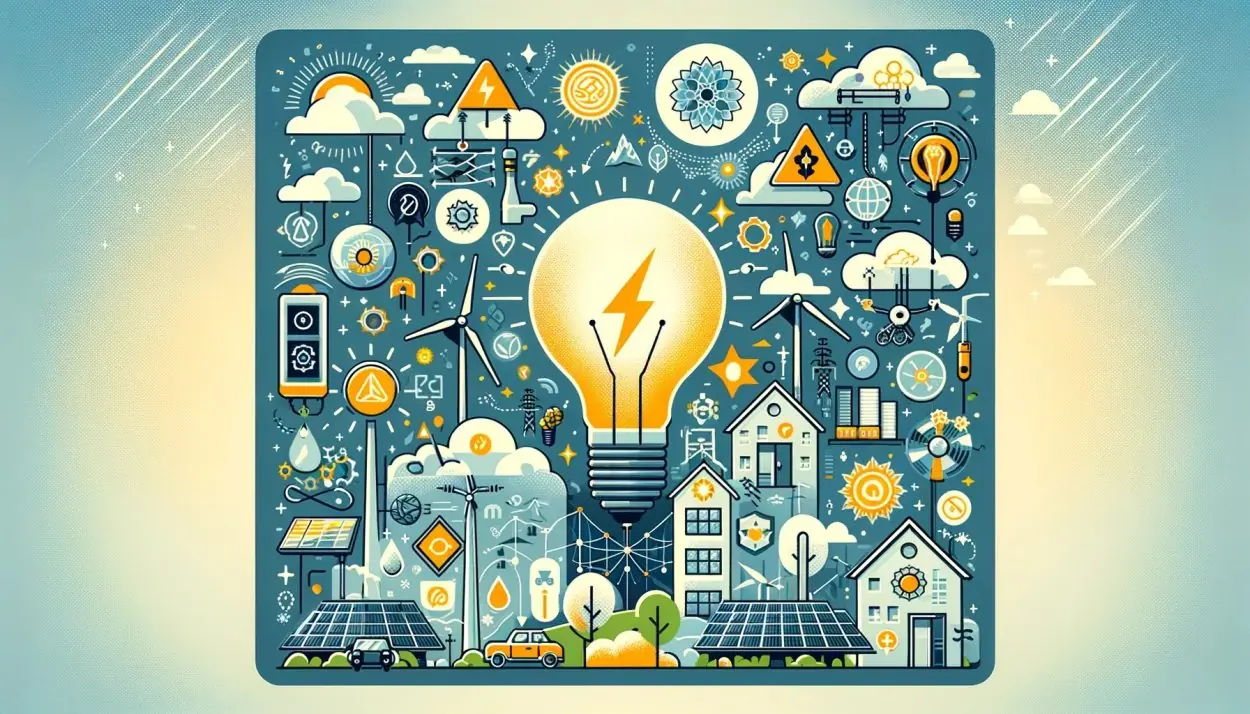
I. Introduction to Electricity
A. Definition of Electricity:
Electricity is a fundamental form of energy observable in positive and negative forms that occurs naturally (as in lightning) or is produced (as in a generator) and that is expressed in terms of the movement and interaction of electrons. It’s the flow of electrical power or charge, a secondary energy source that we get from the conversion of other sources of energy, like coal, natural gas, oil, nuclear power, and other natural sources. These are called primary sources. Electricity can be used to power our homes, offices, and industries, offering a wide range of comforts and conveniences.
B. Brief History and Discovery:
The story of electricity begins with the ancient Greeks who discovered that rubbing amber produced an attraction to small objects. This was around 600 BCE, and it marked the first known study of what we now call static electricity.
The next significant milestone in understanding electricity came with the English scientist William Gilbert around 1600, who coined the term “electricus.” Gilbert is also known for his studies on magnetism and is often credited as one of the first to draw a clear distinction between magnetism and static electricity.
In 1752, Benjamin Franklin conducted his famous kite experiment to demonstrate that lightning is electricity. His experiments led to a better understanding of the electrical nature of storms and began the development of lightning rods that could protect buildings and ships.
The 19th century was a period of great advancement in the study of electricity. Michael Faraday’s work in the early 1800s on electromagnetic induction laid the groundwork for the practical generation of electricity – the dynamo. Around the same time, Georg Simon Ohm formulated Ohm’s Law, fundamental in the study of electric circuits.
Thomas Edison and Nikola Tesla are among the most famous figures in the history of electricity for their work in the late 19th and early 20th centuries. Edison’s work on the electric light bulb and the electrical power system, and Tesla’s contributions to alternating current (AC) power systems form the basis of the modern electrical world.
C. Importance in Daily Life:
In conclusion, while traditional electricity generation has significant environmental impacts, the shift towards sustainable and renewable sources of energy offers a path to mitigate these effects and move towards a cleaner, healthier environment.
Electricity is integral to modern life. It powers our lights, charges our phones, keeps our homes warm or cool, and runs a myriad of appliances including TVs, computers, and refrigerators. Without electricity, there would be no broadcasting, no Internet, and no mobile phones. Electricity is also crucial in healthcare, powering lifesaving equipment like ventilators and monitoring devices.
Beyond its domestic uses, electricity drives numerous industrial processes. It’s essential in manufacturing, from powering machines to controlling technology. In transportation, electricity is becoming increasingly important with the rise of electric vehicles (EVs).
The significance of electricity is not just in its presence, but in its ability to be a clean energy source as we shift away from fossil fuels. With renewable sources like solar and wind power gaining prominence, electricity stands at the forefront of efforts to combat climate change.
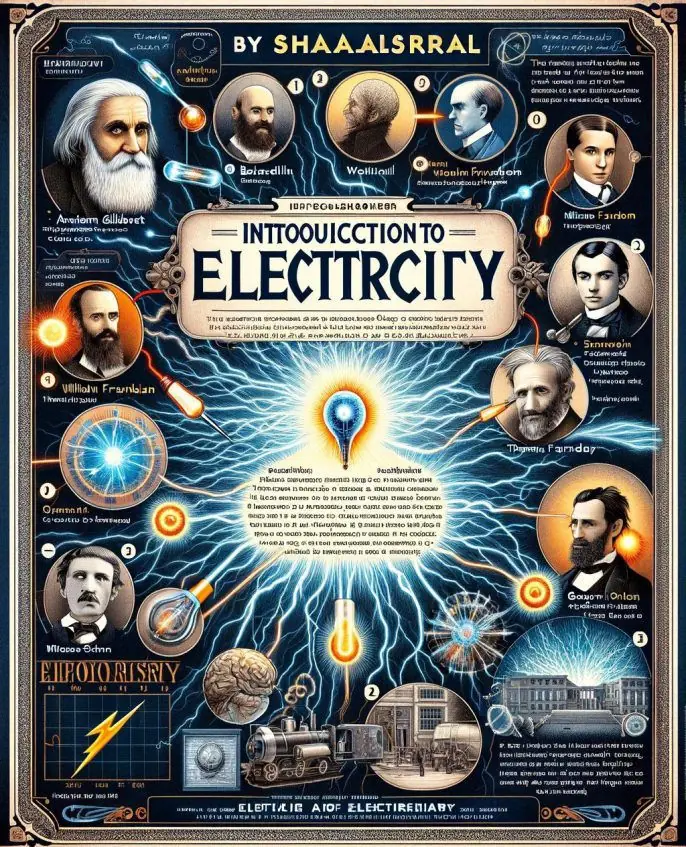
This overview of electricity, from its basic definition and historical development to its indispensable role in everyday life, sets the stage for a deeper exploration of its effects and applications, which are fundamental in shaping the world as we know it today.
II. Basics of Electricity
A. Electric Charge:
- Positive and Negative Charges:
- Electric charge is a fundamental property of matter and comes in two types: positive and negative.
- Like charges repel each other, while opposite charges attract.
- The proton is positively charged, and the electron is negatively charged. Neutrons have no charge.
- Conductors and Insulators:
- Conductors are materials that allow electric charges to flow through them easily. Metals like copper and aluminum are good conductors.
- Insulators are materials that do not allow electric charges to flow through them easily. Examples include rubber, plastic, and glass.
B. Electric Current:
- Flow of Electric Charges:
- Electric current is the rate of flow of electric charge. It’s like the flow of water in a river but with electrons in a wire.
- It’s measured in amperes (A), with the flow direction conventionally from positive to negative.
- Direct Current (DC) and Alternating Current (AC):
- DC is the constant flow of electric charge in one direction. It’s used in batteries, cell phones, and other electronics.
- AC is the flow of electric charge that periodically reverses direction. It’s used in households and industries.
C. Electric Circuit:
- Components: Battery, Wires, Switch, Bulb:
- A simple electric circuit includes a power source (battery), conductive path (wires), control element (switch), and a load (bulb).
- When the switch is on, it completes the circuit, allowing electricity to flow and light the bulb.
- Series and Parallel Circuits:
- In a series circuit, components are connected end-to-end, so the same current flows through each component.
- In a parallel circuit, components are connected across common points, providing multiple pathways for current.
D. Voltage and Resistance:
- Ohm’s Law:
- Ohm’s Law states that the current through a conductor between two points is directly proportional to the voltage across the two points.
- Formulated as V = IR, where V is voltage, I is current, and R is resistance.
- Relationship between Voltage, Current, and Resistance:
- Voltage is the electrical force that drives electric current through a circuit.
- Resistance is the opposition to the flow of current in a material.
- The higher the voltage, the greater the current. The higher the resistance, the lower the current.
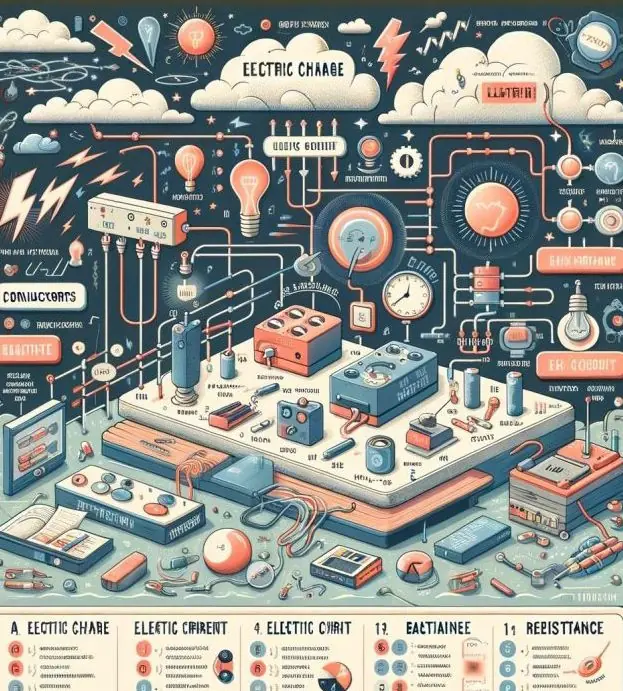
Understanding these basics forms the foundation for exploring more complex electrical concepts and their applications.
III. Effects of Electricity
A. Heating Effect:
- Practical Applications: Electric Bulb, Heater
- The heating effect of electricity is evident when electrical energy is converted into heat energy.
- In an electric bulb, the filament heats up when electric current passes through it, producing light. Similarly, in electric heaters, the current flows through a coil or wire that heats up, radiating warmth.
- Joule’s Law of Heating
- Joule’s Law states that the heat produced by an electrical conductor is proportional to the square of the current, the resistance of the conductor, and the time for which the current flows.
- Mathematically, it’s expressed as ( H = I^2 R t ), where ( H ) is heat, ( I ) is current, ( R ) is resistance, and ( t ) is time.
B. Magnetic Effect:
- Electromagnetism
- Electromagnetism is the interaction of electric currents or fields and magnetic fields.
- When an electric current flows through a wire, it creates a magnetic field around the wire. This is the principle behind electromagnets, where coiling the wire amplifies the magnetic field.
- Applications: Electric Bell, Motors
- In an electric bell, an electromagnet is used to pull a metal arm to strike a bell, while when the circuit is broken, the bell returns to its original position, ready to strike again.
- Electric motors operate on the same principle, where electromagnets are used to create rotary motion. The interaction between the magnetic fields and electric current results in the motor’s spinning action.
C. Chemical Effects:
- Electrolysis
- Electrolysis is a chemical process where electrical energy is used to induce a chemical reaction. This process is essential in breaking down compounds, especially in separating elements.
- It involves passing an electric current through an electrolyte, causing the ions to move to the electrodes and react, resulting in the separation of materials.
- Applications: Batteries, Electroplating
- Batteries work on the principle of converting chemical energy into electrical energy. They consist of
electrochemical cells where a chemical reaction creates a flow of electrons, providing power.
- Electroplating is another application of electrolysis. It involves using an electric current to reduce dissolved metal cations so that they form a coherent metal coating on an electrode. This technique is widely used for decorative purposes, to reduce friction, for corrosion protection, and to improve paint adhesion.
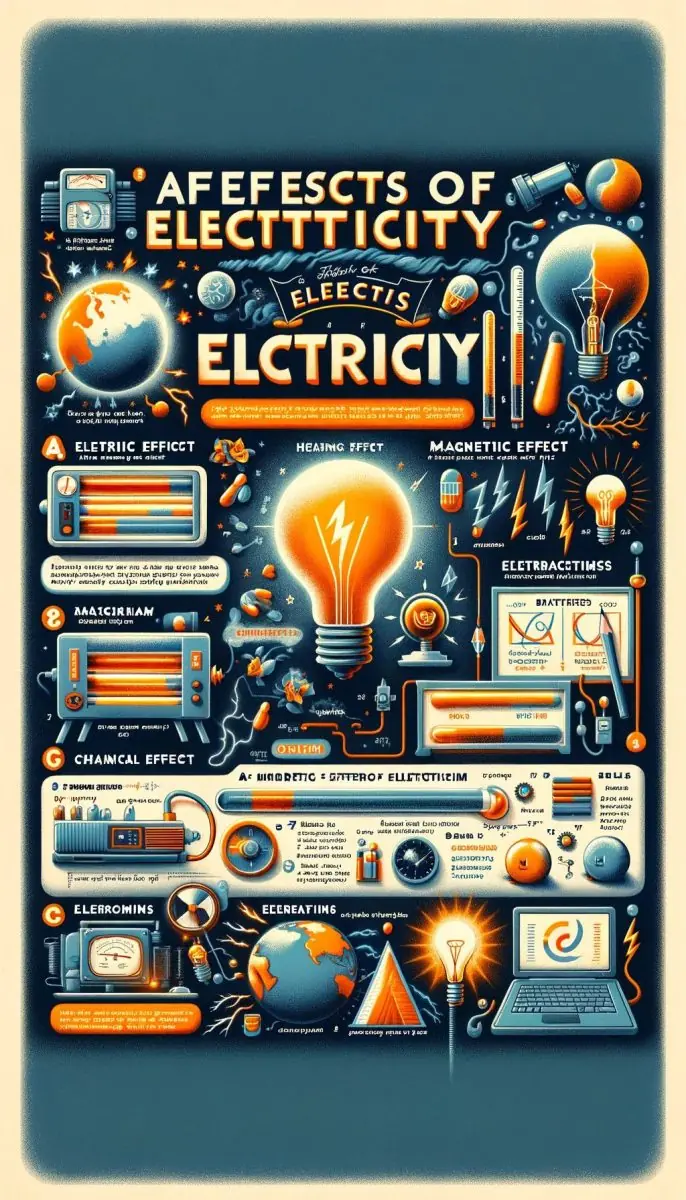
In summary, electricity’s effects are far-reaching and diverse. The heating effect is integral in devices like bulbs and heaters, converting electrical energy into heat and light. The magnetic effect of electricity, through electromagnetism, is fundamental in powering devices like electric bells and motors. Lastly, the chemical effects of electricity, as seen in electrolysis, are crucial in processes like battery operation and electroplating, highlighting the transformative power of electricity in various fields.
IV. Safety Measures and Precautions
A. Dangers of Electricity:
- Short Circuit, Electric Shock:
- A short circuit occurs when an unintended path forms in an electrical circuit, allowing a high flow of current that can cause overheating, sparks, or fire.
- Electric shock happens when a person comes into direct contact with an electrical energy source. This can cause anything from a slight tingling sensation to severe burns or even cardiac arrest, depending on the voltage and duration of exposure.
- Preventive Measures:
- To prevent short circuits and electric shocks, proper wiring and insulation should be ensured. Overloading sockets should be avoided.
- Regular maintenance of electrical appliances and systems, and the use of safety devices like circuit breakers and Ground Fault Circuit Interrupters (GFCIs) can significantly reduce the risks.
- Personal protective equipment (PPE) like rubber gloves and boots should be used when working with electricity.
B. Safe Handling of Electric Appliances:
- Always read and follow the manufacturer’s instructions before using any electrical appliance.
- Keep electrical appliances away from water to prevent electrocution. Never touch electrical appliances with wet hands.
- Unplug appliances when not in use or when cleaning them. Check for damaged cords or plugs and repair or replace them before further use.
C. Importance of Earthing and Fuses:
- Earthing:
- Earthing provides a safe path for the electric current to discharge safely into the ground in case of a fault. It’s a crucial safety mechanism to prevent electric shocks.
- It ensures that the exposed conductive parts of an appliance do not reach a dangerous level of voltage.
- Fuses:
- A fuse is a safety device consisting of a strip of wire that melts and breaks an electric circuit if the current exceeds a safe level.
- It protects circuits from overheating and prevents potential fires. Fuses are designed to ‘blow’ or ‘trip’ when an electrical overload or short circuit occurs.
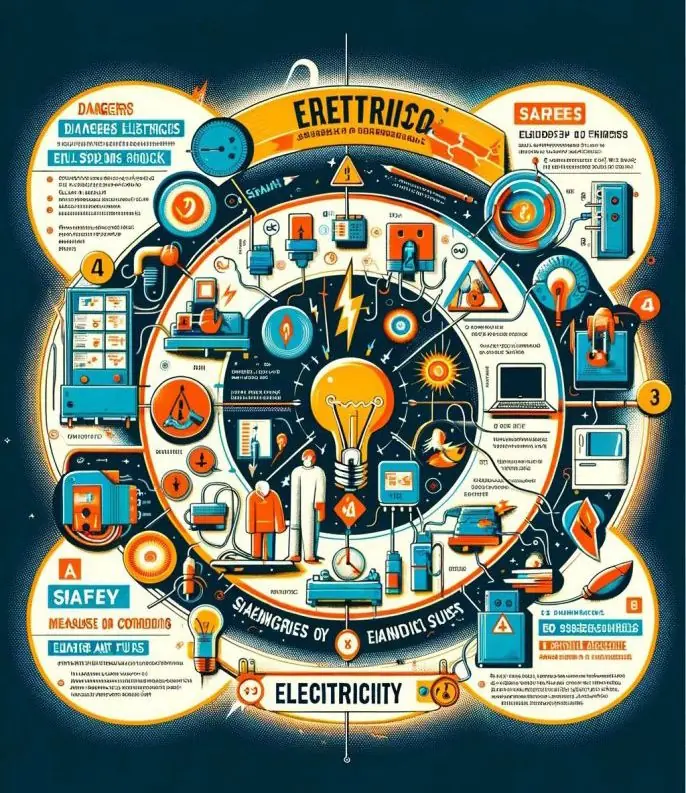
By adhering to these safety measures and precautions, the risks associated with electricity can be significantly mitigated, ensuring a safer environment in both domestic and industrial settings.
V. Environmental Impact
A. Electricity Generation and Environmental Concerns:
- Traditional Electricity Generation:
- Traditional methods of electricity generation primarily involve fossil fuels like coal, natural gas, and oil.
- Burning these fuels releases greenhouse gases like carbon dioxide (CO2) and methane (CH4), contributing to global warming and climate change.
- Besides greenhouse gases, these methods also emit pollutants such as sulfur dioxide (SO2) and nitrogen oxides (NOx), leading to air pollution and health problems.
- Environmental Impact:
- The extraction and burning of fossil fuels have significant impacts on land and water resources. It leads to habitat destruction, water pollution, and soil degradation.
- The process also consumes large amounts of water, contributing to water scarcity in some regions.
- There is also the issue of waste disposal, such as ash from coal plants and nuclear waste from nuclear power plants, which pose long-term environmental risks.
B. Sustainable and Renewable Sources of Energy:
- Renewable Energy Sources:
- Renewable energy sources include solar, wind, hydroelectric, geothermal, and biomass. These sources are considered sustainable as they have a much lower environmental impact and are replenishable.
- Solar and wind energy, in particular, have gained significant attention due to their minimal environmental footprint and declining costs of technology.
- Benefits of Renewable Energy:
- Renewable energy sources do not produce greenhouse gases during operation, making them cleaner and safer for the environment.
- They reduce dependence on fossil fuels, thereby decreasing pollution and improving air quality.
- These sources, particularly solar and wind, require less water for operation, alleviating water scarcity issues.
- Renewable energy systems often have lower operating costs in the long term and can provide energy security and price stability.
- Transition Challenges:
- Shifting to renewable energy sources poses challenges including the need for new infrastructure, investment in technology, and overcoming intermittency issues (like solar power being unavailable at night).
- However, advancements in energy storage, grid technology, and policy support are addressing these challenges, paving the way for a more sustainable energy future.
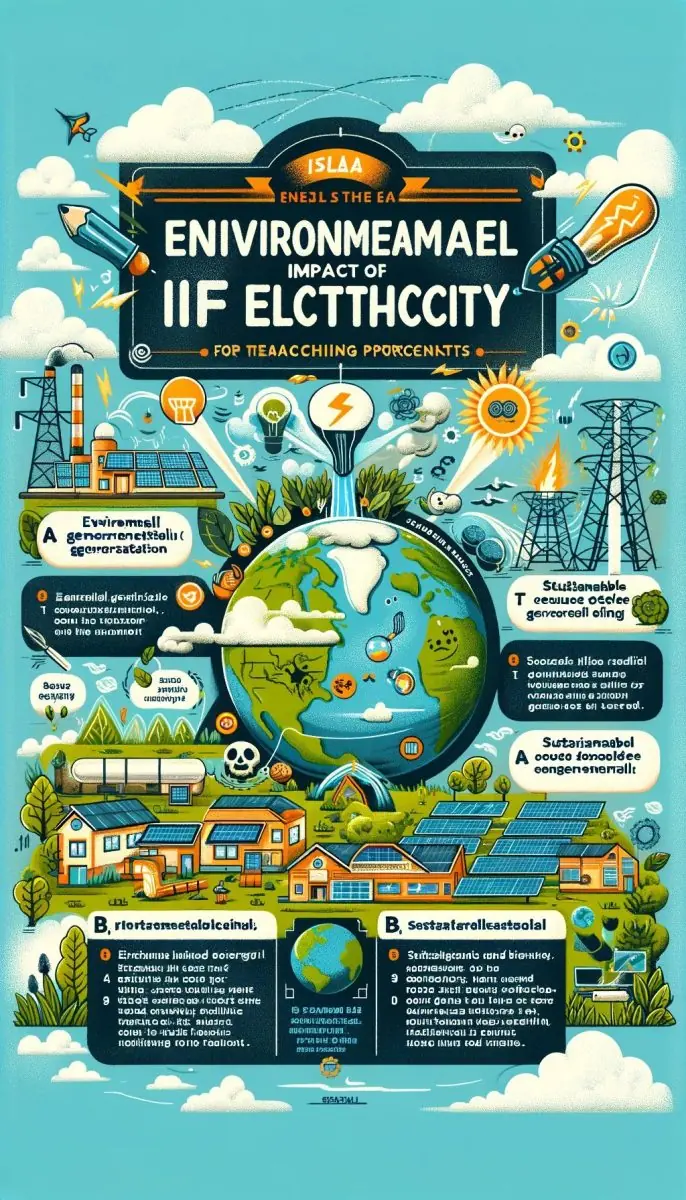
VI. Current Innovations and Future of Electricity
A. Smart Grids and Sustainable Energy:
- Smart Grids:
- Smart grids represent an evolution in electricity network management, integrating digital communications technology with the electricity network.
- They allow for two-way communication between utility companies and consumers, efficient transmission of electricity, improved demand management, and quick response to power outages.
- Smart grids also facilitate the integration of renewable energy sources like wind and solar power into the grid, making energy distribution more sustainable.
- Sustainable Energy Integration:
- These grids enable a more efficient and reliable distribution of sustainable energy, accommodating the variability and intermittency of renewable sources.
- By optimizing energy distribution and usage, smart grids play a crucial role in reducing greenhouse gas emissions and advancing the transition to a sustainable energy future.
B. Advancements in Battery Technology:
- Improved Energy Storage:
- Modern advancements in battery technology are crucial for both mobile applications (like electric vehicles) and stationary applications (like energy storage for homes and businesses).
- Improved battery technologies, such as lithium-ion batteries, offer higher energy density, longer lifespans, and faster charging times.
- Facilitating Renewable Energy:
- Advancements in battery storage are key to overcoming one of the main challenges of renewable energy sources: their intermittent nature.
- Better batteries allow for more effective storage of energy generated from renewable sources, ensuring a consistent and reliable energy supply.
C. Role of Electricity in Future Technologies:
- Driving Technological Innovation:
- Electricity is at the forefront of powering future technologies. It’s essential in the development and operation of technologies such as electric vehicles, smart homes, and IoT (Internet of Things) devices.
- Electrification of Transportation:
- The future of transportation is heavily leaning towards electrification, reducing dependence on fossil fuels and decreasing environmental pollution.
- Electric cars, buses, and even electric aircraft are becoming more prevalent, driven by advances in electric motors and battery technology.
- Decentralized Energy Systems:
- The future may see a shift towards decentralized energy systems, where electricity is produced closer to where it’s consumed
, such as solar panels on homes or local wind turbines. This approach can reduce transmission losses and increase energy security.
- Integration with Artificial Intelligence:
- AI is playing an increasingly important role in managing and optimizing energy systems. AI algorithms can predict demand, optimize renewable energy usage, and enhance the efficiency of the grid.
- Contribution to Sustainable Development:
- Electricity, especially from renewable sources, is pivotal in achieving sustainable development goals. It can help combat climate change, provide clean energy access, and support sustainable cities and communities.
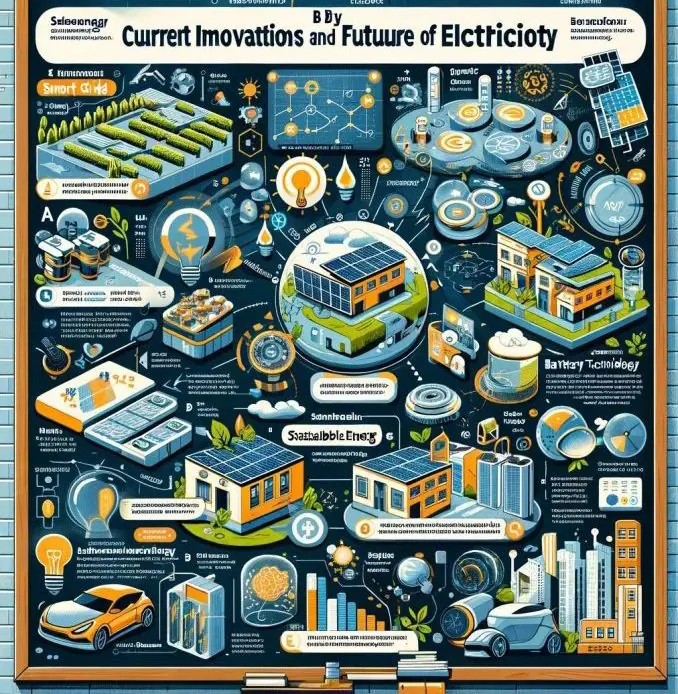
In summary, the future of electricity is intertwined with technological innovation, environmental sustainability, and a shift towards smarter, more efficient energy systems. Developments in smart grids, battery technology, and the broader role of electricity in future technologies are not just enhancing the way we use energy but also shaping a sustainable future.
VII. Conclusion
A. Summary of Key Points:
- Understanding Electricity:
- Electricity is a fundamental form of energy, crucial for modern life. It’s the flow of electrical charge and is a secondary energy source derived from primary sources like fossil fuels, nuclear power, or renewable sources.
- Basics of Electricity:
- Essential concepts include electric charge, electric current, electric circuits, and the relationship between voltage, current, and resistance. Understanding these basics is crucial for delving into more complex electrical phenomena.
- Effects of Electricity:
- Electricity has various effects, such as heating (used in devices like heaters and bulbs), magnetic (found in motors and electric bells), and chemical (seen in batteries and electroplating).
- Safety Measures:
- It’s vital to understand and respect the dangers of electricity, like electric shocks and short circuits. Safety measures include proper handling of electrical appliances, understanding the importance of earthing and fuses, and adhering to safety guidelines.
- Environmental Impact:
- Traditional electricity generation from fossil fuels has significant environmental impacts. There is a growing shift towards sustainable and renewable energy sources to mitigate these effects.
- Current Innovations and Future Prospects:
- Innovations in smart grids, battery technology, and the integration of AI in energy systems are shaping the future of electricity. The electrification of transport and the increasing role of electricity in new technologies are also notable trends.
B. Importance of Responsible Electricity Use:
- Responsible use of electricity involves not only safety considerations but also an awareness of its environmental impact.
- Reducing electricity wastage, opting for energy-efficient appliances, and supporting renewable energy initiatives are ways individuals and communities can contribute to more sustainable energy consumption.
C. Future Prospects in the Field of Electricity:
- The future of electricity is intertwined with technological advances, environmental sustainability, and a shift towards smarter, more efficient, and cleaner energy systems.
- With ongoing research and development, we can expect further advancements in energy storage, smarter electricity networks, and innovative
applications in various sectors including transportation, healthcare, and industry.
- The continuous integration of renewable energy sources is set to reshape how we generate, distribute, and use electricity, leading to a more sustainable and eco-friendly future.
- Moreover, the role of electricity in digital and smart technologies highlights its critical part in the evolving landscape of technology and innovation.
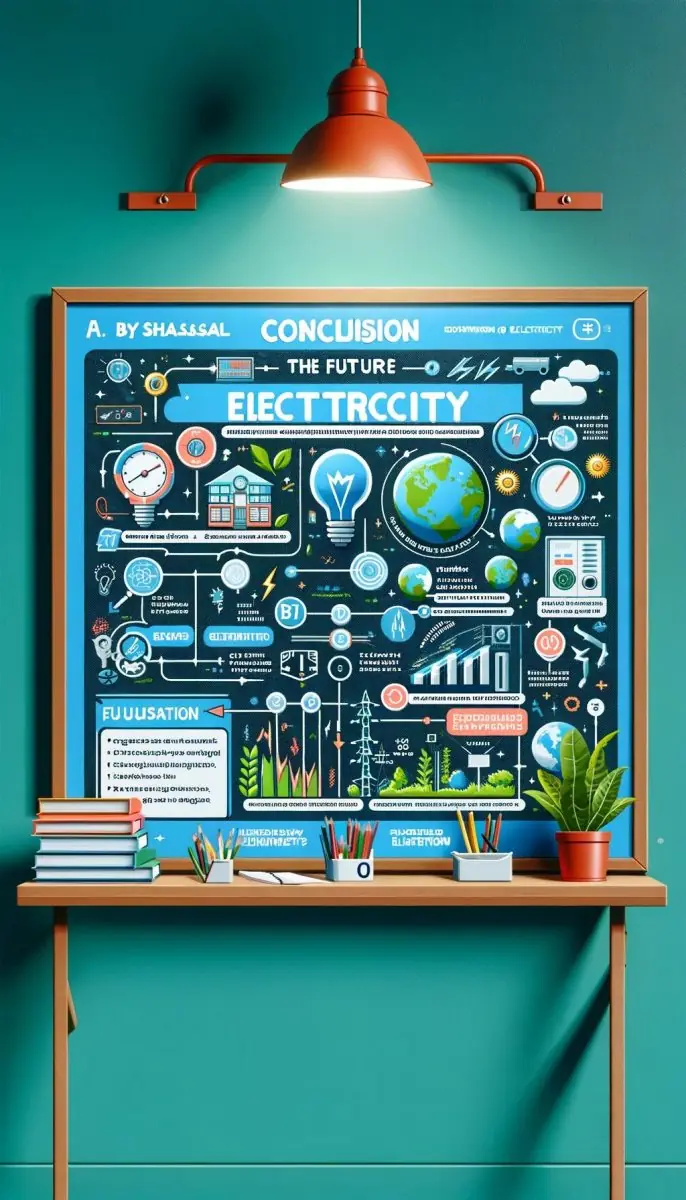
In conclusion, electricity is not just a cornerstone of modern civilization but also a dynamic field that is rapidly evolving with new discoveries and innovations. Its responsible use and the transition towards sustainable practices are essential for environmental preservation and the well-being of future generations. The future of electricity is indeed bright and holds immense potential for further transforming and improving our world.